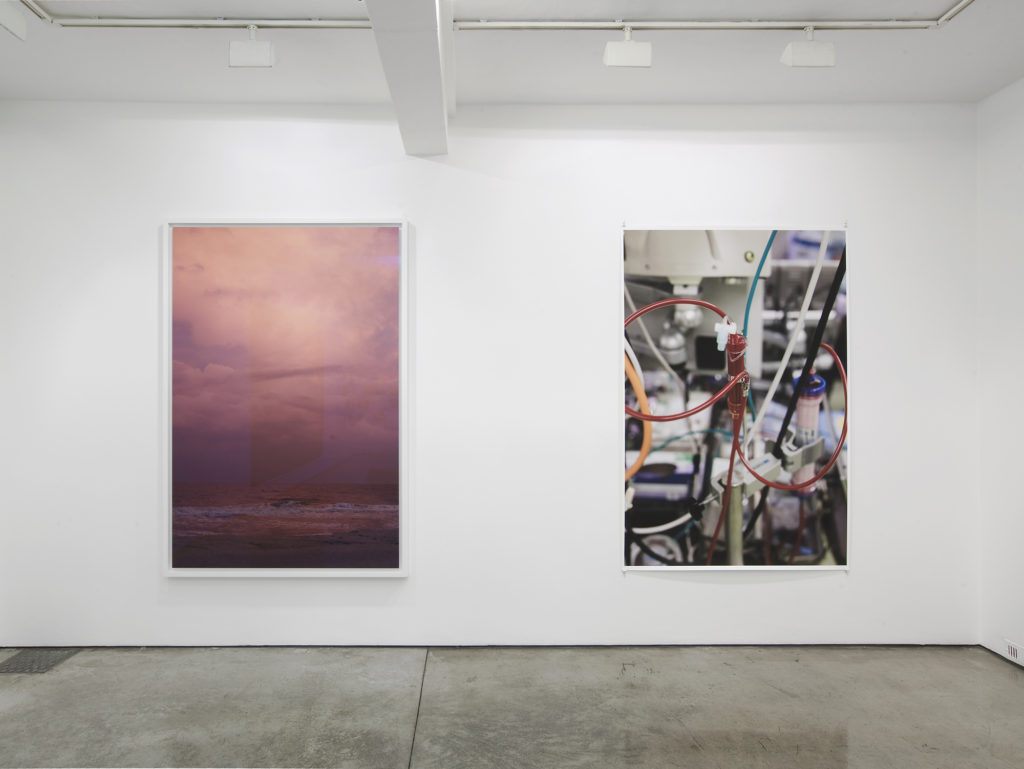Wolfgang Tillmans’ latest exhibition at Maureen Paley may prove to be a very important art show. His exhibition of photographs convey greater agency, rendered all the more poignant in defeat, because the London- and Berlin-based German artist, had so conspicuously lashed himself to the cause of keeping the UK within the EU, which ultimately failed. He established a sophisticated poster campaign, with unambiguous messages like “Say you’re in if you’re in” and “What is lost is lost forever”, to mobilise the young to vote for the United Kingdom European Union membership referendum. They are still on view outside the gallery —an eloquent, mute memorial.
Tillmans’ signature-style comes out in the exhibition: photographs that are closely cropped to isolate their subject, or enlarged to the point of abstraction. The colour is often luscious, but printed in a relatively standard C41 or inkjet process. Although his work is carefully composed, there is no apparent evidence of computer graphics or complex staging. There’s a consistent, almost painterly, obsession with light and shadow. Tillmans’ hang is casual but precise.

Throughout the show, we see references to the objects and language of markets, capital and migration: petrochemical plants, a non-functional ATM, border control at a UK airport, a business-class cabin. The main ground-floor space is dominated by ‘The State We’re In, A’ (2015), a landscape-format shot of the sea, which, owing to its almost-abstract image and large size, attains a status closer to an object than a mere photograph. The sea recalls the central issue of the EU debate, immigration into the UK across the English Channel. It also recalls Europe’s main existential crisis —seemingly uncontrollable migration across the Mediterranean.
Tillmans has shown, since his earliest work, an ability to transform the quotidian or the personal, into an image that is societal, almost objective. In the upstairs gallery, the high tables and blank paper of the ‘I refuse to be your enemy, 2’ (2016) installation, is particularly striking. Part of a series that started in 2005, it recalls bureaucracy —a post office counter, an airport desk for filling out customs declarations. In a specific UK context, the term ‘Brussels bureaucracy’ and the associated (perceived) loss of sovereignty, form the core of the Leave campaign’s argument. Yet there is another, equally valid, perspective on bureaucracy: the European Union was founded on the basis that a competent, relatively honest, and democratically accountable technocracy would help, through step-by-step acts of regulatory and financial harmonisation, unify a diverse continent riven by centuries of war and religious strife. Tillmans, as he states on his website, unambiguously supports this European view: “We can exchange goods without having to probe product safety each and every time between the 28 countries. Brussels bureaucracy deals with that, and actually quite efficiently.”

Tilmans’ exhibition effectively warned of the danger of complacency, and loudly campaigned in favour of Remain. His was a strong voice in the United Kingdom arguing a powerful positive or philosophical or emotive case for the EU. Here, the UK-based German artist illustrated a Continental perspective, in opposition to what philosopher Jurgen Habermas eloquently summarises as a historically English approach, one which is a purely pragmatic pursuit of economic ends.
In the aftermath of the vote, much has been made of London’s ‘cultural elite’ being ‘in a bubble’; a fair cop, not helped by some tart, if misjudged, comments by artists themselves. Those in this bubble have more in common with their peers and friends in cities like Glasgow, Lisbon, or New York. They are linked by international travel, relationships mixed across citizenship and ethnicity, a taste for the urban and risqué, and reliance on social media as a way of making strong professional and personal bonds.
Although it may be a naïve view on the part of some who populate it, this bubble sees itself as the future that transcends the parochial bounds of the nation-state. What Tillmans warned us about, and what the vote showed in actuality, is how quickly that bubble can be burst as an angry nativist hinterland asserts its democratic right.**













